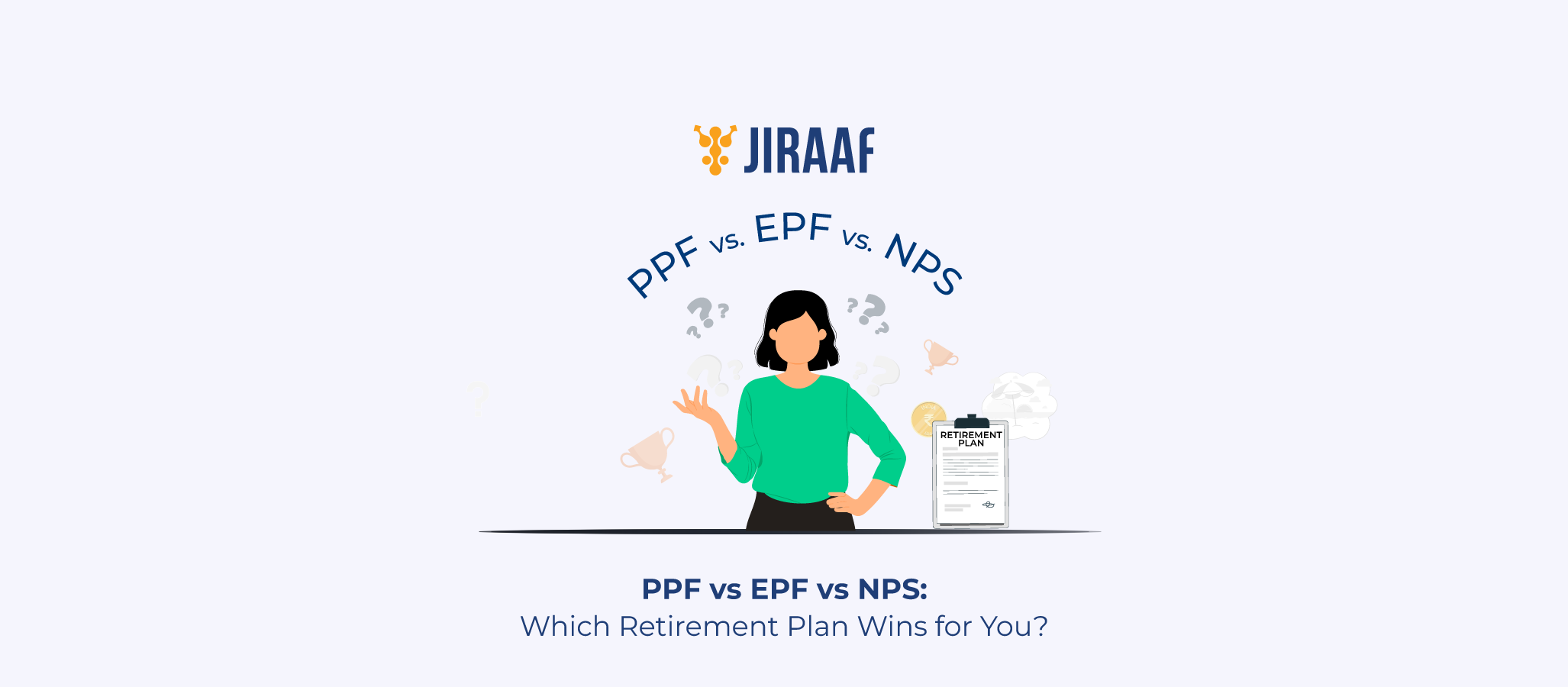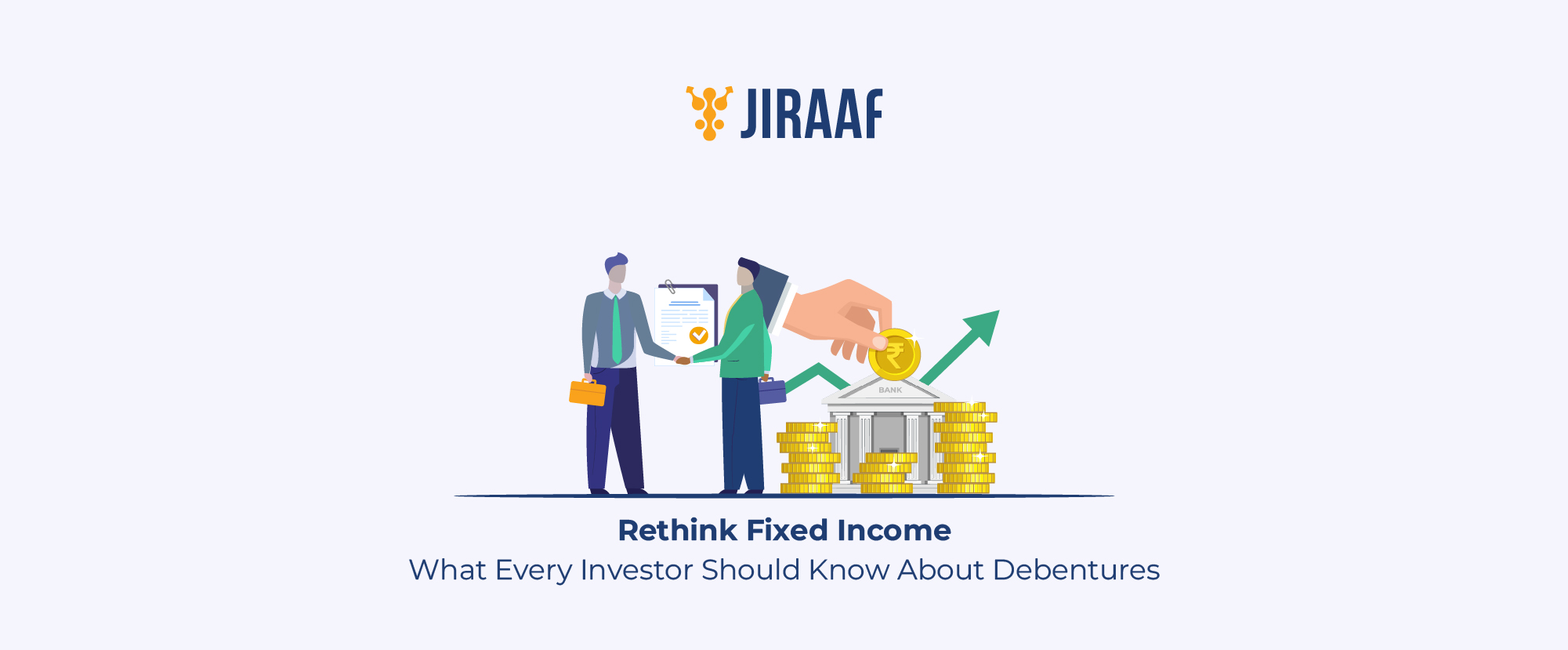When it comes to building a secure retirement corpus, you’re spoilt for choice. Among the most popular government-backed options available in India are the Public Provident Fund (PPF), Employees’ Provident Fund (EPF), and National Pension System (NPS). Each of these schemes offers tax-saving benefits under Section 80C, but they serve different purposes, follow distinct rules, and suit different kinds of investors.
Understanding how these schemes work, how they compare in terms of returns, flexibility, tax treatment, and withdrawal options can help you make smarter, long-term financial decisions. This blog breaks down everything you need to know about PPF, EPF and NPS in a clear and structured way so you can decide which one or which combination of schemes works best for your financial goals and risk appetite.
What is Public Provident Fund?
The government launched the Public Provident Fund in 1968 to encourage individuals to build long-term savings. You can open a PPF account at a bank or post office and contribute up to ₹1.5 lakh per year. The scheme offers a fixed, government-set interest rate, which is revised quarterly. It has a 15-year lock-in period, and the maturity amount, including interest, is fully tax-free.
What is the Employees Provident Fund?
The Employees’ Provident Fund (EPF) is a mandatory retirement savings scheme for salaried employees working in organisations registered under the EPF Act. Every month, your employer deducts 12% of your basic salary and dearness allowance toward EPF and matches that contribution (with a portion directed to the Employee Pension Scheme). The Employees’ Provident Fund Organisation (EPFO) manages these funds and declares an annual interest rate. Withdrawals are allowed under specific conditions and become tax-free after 5 years of continuous service.
What is the National Pension System?
The government introduced the National Pension System as a voluntary, market-linked retirement investment scheme. You can open an NPS account through a Point of Presence (POP) or online. Contributions go into a mix of equity, corporate bonds, and government securities, based on the asset allocation you choose. You can invest until the age of 60, with partial withdrawal options available. At retirement, you must use at least 40% of the corpus to buy an annuity, and the rest can be withdrawn as a lump sum.
Returns Comparison: PPF vs EPF vs NPS
| Scheme | Nature of Returns | Current Rate (FY26) | Risk Level |
| Public Provident Fund | Fixed, government-backed | 7.1% (tax-free) | Very low |
| Employees’ Provident Fund | Fixed, declared by EPFO | 8.15% (tax-free) | Very low |
| National Pension System | Market-linked | 8% to 10%+ (partially taxable) | Moderate |
Now, here’s where things get interesting:
- PPF offers guaranteed but lower returns. It’s safe, but growth is capped.
- EPF offers a relatively higher return than PPF and is also tax-free. The catch is that it is only for salaried folks.
- NPS has the highest potential returns, due to its market-linked component. That means your gains can vary depending on stock market’s performance.
If you’re young and have the risk appetite for some volatility, NPS can grow your money the fastest. But if you prefer stability and peace of mind, EPF and PPF can be your top alternatives because they are almost risk-free investments as they are backed by the central government!
Liquidity & Lock-in Period Comparison: PPF vs EPF vs NPS
| Scheme | Lock-In Period | Partial Withdrawal | Loan Facility |
| Public Provident Fund (PPF) | 15 years | After 7 years | Yes (from 3rd to 6th year) |
| Employees’ Provident Fund (EPF) | Till retirement (or 2 months unemployed) | Yes, for specific reasons | No |
| National Pension System (NPS) | Till 60 years of age | Partial (up to 25% after 3 years) | No |
Here’s the breakdown.
- PPF is a long-term commitment. Still, if you find yourself in the need for funds for some emergencies, you can partially withdraw from your balance after seven years or take a loan earlier of up to 25% of the balance in your PPF account from the 3rd to 6th year.
- EPF is linked to your job. If you decide to quit your job and stay unemployed for 2 months, you can fully withdraw the money from your EPF account.
- NPS is locked in for good. You can only withdraw up to 25% of your contribution before the age of 60, and the rest is locked in till then.
So, if you value liquidity, EPF gives you more breathing room, especially if you’re employed. NPS, not so much.
Taxation & Deductions Under 80C & 80CCD
Taxes. The part we all love to hate. But hey, here’s where things get interesting—because each of these schemes gives you tax benefits, but in slightly different ways.
| Scheme | Eligible for 80C Deduction | Additional Deductions | Tax on Maturity |
| Public Provident Fund (PPF) | Yes, up to ₹1.5 lakh | No | Fully Tax-Free |
| Employees’ Provident Fund (EPF) | Yes, up to ₹1.5 lakh | No | Fully Tax-Free |
| National Pension System (NPS) | Over & above ₹1.5 lakh | Extra ₹50,000 under 80CCD(1B) | Partially Taxable |
Let’s decode this.
- PPF and EPF fall under the classic Exempt-Exempt-Exempt (EEE) status. That means no tax on investment, no tax on interest, and no tax on maturity.
- The National Pension System (NPS) works on more of an Exempt-Exempt-Taxed (EET) model. Although you can claim deductions of up to ₹1.5 lakh under Section 80C, for all 3 schemes but with NPS you can claim another ₹50,000 under Section 80CCD(1B). At maturity, up to 60% of your corpus is tax-free, the remaining 40%, must be used to buy an annuity, which would be taxed as per your income tax slab.
So, if your priorities are maximum tax savings and tax-free returns, PPF and EPF win. But if you want extra deductions beyond ₹1.5 lakh in 80C, NPS could be your savior.
Comparison Table: All 3 at a Glance
| Feature | Public Provident Fund (PPF) | Employees’ Provident Fund (EPF) | National Pension System (NPS) |
| Eligible Investors | All resident individuals | Salaried employees in organizations covered under the EPF Act | All individuals (salaried and self-employed) aged 18–70 |
| Contribution Limit | ₹500 – ₹1.5 lakh per year | 12% of basic salary (mandatory), matched by employer | Minimum ₹1,000/year; no maximum limit |
| Investment Horizon | Minimum 15 years (extendable in 5-year blocks); ideal for long-term wealth accumulation | Throughout employment; automatically deducted each month | Until 60 years of age; designed as a long-term retirement vehicle |
| Lock-in Period | 15 years | Till retirement or job change (can be transferred to new employer) | Locked till 60 years, with partial withdrawal after 3 years |
| Returns | ~7.1% (fixed and revised quarterly by the government) | ~8.15% (interest rate set by EPFO, generally higher than PPF) | ~8–10%+ (market-linked, based on equity-debt mix and fund performance) |
| Risk | Very low (sovereign-backed, capital protected) | Very low (government-regulated, fixed interest) | Moderate (exposure to equity and market fluctuations) |
| Tax on Returns | Entirely tax-free under EEE (Exempt-Exempt-Exempt) regime | Entirely tax-free under EEE (Exempt-Exempt-Exempt) regime | Partially taxable (60% of the corpus is tax-free at maturity, remaining 40% must be annuitized and is taxed as per income slab) |
| 80C Deduction | Yes, up to ₹1.5 lakh | Yes, up to ₹1.5 lakh | Yes, ₹50,000 under Section 80CCD(1B) which is over & above the ₹1.5 lakh under 80C |
| Liquidity | Partial withdrawals allowed after 7 years for specific purposes | Partial withdrawals for specific life events (e.g., marriage, illness, education) after 5 years of contribution | Partial withdrawal (up to 25%) allowed after 3 years for specified reasons |
| Loan Facility | Yes (loan available between 3rd and 6th year) | No | No |
| Risk Appetite | Suitable for low-risk investors seeking guaranteed, predictable returns | Ideal for low-risk investors looking for stable growth through structured saving | Suited for moderate to high-risk investors comfortable with market fluctuations and seeking higher long-term returns |
| Best For | Long-term conservative goals like children’s education, marriage, or retirement where capital protection is key | Building a disciplined, employer-assisted retirement corpus over a long career | Creating a diversified retirement corpus combining equity and debt exposure; ideal for tax optimization beyond traditional 80C investments |
Should You Choose One or a Mix?
Each one of these investment options—PPF, EPF and NPS—comes with its own set of rules, benefits, and boundaries. But the real value of these instruments isn’t just in how much tax they help you save or how much interest they offer.
It’s in the way they reflect how you want to approach your future and how they can fit in your portfolio.
Maybe you prefer predictability and slow, steady growth. Maybe you’re open to a bit of market exposure for higher potential returns. Or maybe you’re somewhere in between—balancing structure with flexibility. None of these choices is wrong. What matters is that they mirror your priorities, your lifestyle, and your timeline.
Tax-saving is just the entry point. What you’re really doing is choosing a framework to shape your financial future—one that aligns with your pace, your plans, and your peace of mind.
Start today, not just to save tax, but to build a future that feels truly yours.
Because the best time to plan your tomorrow is while you’re in control of today.
FAQs
Can I invest in all three schemes?
Yes, you can invest in all three—Public Provident Fund (PPF), Employees’ Provident Fund (EPF), and National Pension System (NPS)—simultaneously. They serve different purposes and offer unique tax benefits, so combining them can actually strengthen your retirement portfolio.
Is NPS better than EPF for retirement?
National Pension System (NPS) can offer higher returns than Employees’ Provident Fund (EPF) due to market exposure, but it also carries more risk. EPF is safer with fixed, tax-free returns. If you’re comfortable with some risk and want better growth, NPS may be better, if you’re a risk averse investor, EPF offers you stability.
Is PPF enough for retirement saving?
Public Provident Fund (PPF) is a safe and tax-free option, but it alone may not be enough for retirement because of its limited contribution cap and moderate returns. It’s best to combine PPF with other investments like the National Pension System (NPS) or mutual funds for a stronger retirement corpus.
Discover fixed income investments with Jiraaf, a SEBI registered online bonds platform that educates and brings access to a wide array of bonds. Sign up today to explore diversified fixed income investment opportunities to support your goal-based wealth creation journey. Start investing!









